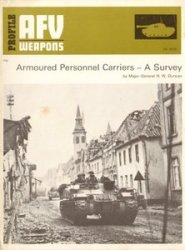The castles of Wales are among the best examples of a medieval governmental
military complex. In Wales the English kings Henry III
(1216–72) and Edward I (1272–1307) constructed a group of castles for
both military and administrative use, determined as they were to hold
the rebellious territory. Edward I planned a series of castles across northern
Wales—Conway (1283–87), Caernarfon (1283/5–1322/3), Harlech
(1285–90), and Beaumaris (1295–1320)—all designed by James of St.
George (1235–1305). Caernarfon had ample space for nonmilitary functions.
It housed the court of law, the state records and archives, and the
treasury. It was also what scholars today call an “elite residence” and a
bastide; that is, it was a fortified palace and had an attached fortified
town. The castle and city at Caernarfon became the de facto English capital
of Wales, and even today the heir to the British throne is invested
as Prince of Wales at Caernarfon.
Edward had seen the Muslim and Christian castles while on crusade
in 1270, and he recognized the value of their emphasis on walls rather
than a single tower. He returned home by way of Savoy. To build
Caernarfon, Edward brought from Savoy a military engineer and archi
tect, James of St. George (c. 1235–1305), who took charge of the design
and building of the king’s proposed chain of castles.
For his principal castle in Wales, Edward chose a site dominating the
Menai Strait, the ancient Roman settlement of Segontium where an
eleventh-century motte and bailey castle had already been built by Hugh
of Avranche, Earl of Chester. The castle as we see it today was built between
1283 and 1323 and never finished (Figure 19).
Caernarfon has an exceptionally fine plan, with upper and lower wards
(courtyards) forming an hourglass shape. The curtain wall stretches between
thirteen towers—two flanking the King’s Gate, two flanking the
Queen’s Gate, seven huge polygonal towers, one small cistern tower, and
a small watch tower. Complex battlements included a crenellated wallwalk
and towers and double shooting galleries, one above the other.
When hoardings were added during wartime, three rows of archers could
defend the same section of wall. Rather than simple arrow loops, triple
radiating embrasures with single outside arrow slits pierced the wall, allowing
many archers to shoot simultaneously. All the towers are independent
barriers, separating segments of the wall from each other;
consequently, if an enemy gained the top of the wall, he could not move
easily to another section.
The castle had two principal entrances. The King’s Gate, or main entrance
from town, was an elaborate two-tower gatehouse. A drawbridge
over a moat on the town side (today a modern bridge) led to a complex
entry that was planned to include a series of five heavy doors and six
portcullises, ending in a second drawbridge. The second story provided
space for guard rooms, the operation of the portcullises and drawbridges,
and even the castle’s chapel. Never finished, the gatehouse was intended
to extend across the castle from wall to wall, dividing the space into upper
and lower wards.
Master James of St. George incorporated the Norman mound into
the upper yard as the site of the Queen’s Gate (the southeast gate).
Consequently the Queen’s Gate opens high above the town, protected
by towers and machicolations. A long ramp with a turning bridge rather
than a drawbridge once linked the gate to the land below. Remains of
bridge works are still visible, but the ramp may never have been finished.
The governor (justiciar) of Wales lived in the powerful Eagle Tower
in the lower court at the western end of the castle. From the top of this
huge polygonal tower three turrets or watch towers overlook the Menai
Strait and command the approaches to the castle. Each turret was decorated
with the sculpture of an eagle, the coat of arms of the first governor
Sir Otto de Grandson. The tower had a basement and three stories,
each with a large central room and chambers in the walls. The chambers
housed a chapel, a kitchen, and garderobes. On the ground floor, a watergate
with a portcullis opened to the Menai Strait. Distinguished visitors
arriving by boat entered the castle here.
In the Well Tower next to the King’s Gate, another watergate permitted
easy access to deliver supplies to the kitchens. The kitchens were
of timber and filled the space along the wall between the towers. The
great hall also stood in the lower court, across from the kitchens and next
to the Queen’s Tower. Only the foundations survive to give us an idea of
sizes. All the rooms were spacious and well lit, and equipped with fireplaces
and garderobes. The names of the towers—the Chamberlain’s or
Record Tower and the Queen’s Tower—recall the castle’s use as both an
administrative center and a residence.
In Wales the contrast between the great cylindrical tower at Pembroke
(see Figure 3) and the towered walls of Caernarfon highlight the shifting
political and economic expectations. Sieges such as that of Chateau
Gaillard had pointed out the weakness of military tactics based on a gradual
retreat to an isolated tower. The future clearly lay with reinforced
walls. A large open space inside the walls allowed a larger number of men
to move rapidly from place to place, defending the walls and using wall
towers and sally ports to mount surprise attacks.
The strength of the permanent garrison at Caernarfon is known from
the accounts kept during Edward I’s reign. The constable was in charge
of the castle, assisted by two “Serjeant horsemen.” In addition there were
ten crossbowmen, a smith, a carpenter, a “mechanic,” and twenty-five
footmen at arms, for a total of forty men. At the beginning of the fifteenth
century the castle was staffed by a hundred professional soldiers—
twenty men-at-arms and eighty archers. At the same time the castle at
Harlech had ten men-at-arms and thirty archers. (This information and
more can be found in A History of Fortification by Sidney Toy, New York:
Macmillan, 1955, pp. 210–11, quoting Welsh Roll Chancery, 12 Edw. I,
1284, Memb. 5; cat. Rot. Wall., 288, and Acts of the Privy Council, Vol.
II, Henry IV, pp. 64–66.)




 World History
World History









